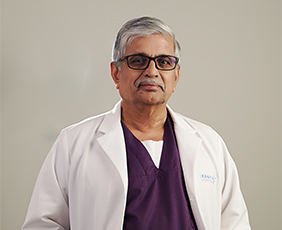Infertility Treatment – Before treating infertile couple, it is very important that both are evaluated thoroughly. A detailed menstrual history, sexual history and through examination of both the couples are mandatory. Statistics say that about eighty percent of the couple that approach for infertility treatment can be treated by counselling alone and it is only twenty percent of them that require some form of infertility treatment. Even in this category only less than ten percent will require higher modality of infertility treatment like IVF (In Vitro Fertilization) or ICSI (Intra Cytoplasmic Sperm Injection).
For men, after your doctor had finished studying health history, medications, sexual history, sex habits, physical examination, sperm analysis and for women tests like pelvic examination, ovulation study, blood tests, hormone levels, ultrasound findings, x-rays etc, the doctor can arrive the possible reasons for infertility. Based on the above said studies your doctor can start the treatment for infertility.
Semen analysis and infertility treatment for male
Men need to be treated when some abnormality is found in the semen analysis. The sperm count test analyses the quality and health of man’s semen. First and the most important in infertility treatment is the correction in lifestyle or some change in lifestyle, improved sexual life etc that can help improve the semen parameters. Further to that there are also antioxidants in the form of medications that will help improve the quality of semen. There are also certain situations that can be corrected by surgery like Varicocele, Hydrocele, Phimosis etc, the correction of which can be beneficial.
In cases of severe male factor, we have options like ICSI (Intra Cytoplasmic Sperm Injection) that can overcome the semen problem. In instances where there is no sperms in the semen sample (Azoospermia), the option will be to try and do sperm retrieval from the Epididymis Percutaneous Epidydimal Sperm Aspiration (PESA) or testis (Testicular / Epididymal Sperm Aspiration or Extraction TESE, Micro TESE) and use those sperms for Intracytoplasmic sperm injection (ICSI) as a part of infertility treatment.
Female Infertility Treatment
The treatment for female infertility may be based on what causes the infertility. The reason for female infertility can be the damages to your fallopian tubes or some hormonal problems or it can be cervical issues. There may be cases where the female infertility remains unexplained. Women are primarily treated depending on the cause that is identified. If not, the first option is to promote or improve ovulation with fertility drugs in the form of tablets or injections.
In situations where it is associated with male factor problem or even in unexplained infertility, a procedure called IUI (Intra Uterine Insemination) is done. This is a procedure of washing the husband’s sperm and concentrating it and injecting it into the uterus of the female at the time of ovulation. In situations, where we have diagnosed some cyst, fibroid, tubal block while evaluation then the next option is to correct it by a surgery, preferably a Laparoscopy. And then as the last resort we have option of these advanced reproductive techniques like IVF(In Vitro Fertilization), ICSI (Intra Cytoplasmic Sperm Injection) etc.
Assisted Reproductive technology (ART) using Sperm and Egg in infertility treatment
Assisted Reproductive Technology (ART) is the general term used to express the different procedures of infertility treatment with the primary goal of achieving pregnancy through these infertility treatment procedures. This reproductive technology includes fertility treatment that handles both a woman’s egg and a man’s sperm.
There are several types of assisted reproductive techniques available even though they are commonly referred to as test tube treatment in infertility treatment.
In Vitro Fertilization (IVF)
The first option of (In Vitro Fertilization) IVF treatment means that we have just added the sperms and eggs in a particular dish and leave it for some time so that the sperm can naturally penetrate the egg and become an embryo. The second option ICSI (Intracytoplasmic sperm injection) is where in we will inject one sperm into one egg by use of an instrument called micromanipulator. ICSI is primarily done in situation where there is very poor semen parameter or some fertilization issues with the egg. When we select the sperm under high magnification (7000-10000 times) contrary to what happens in ICSI (200-400 times) and then inject the sperm into the egg, it is called IMSI (Intracytoplasmic morphological sperm injection). To improve the implantation potential of the embryos, techniques such as Laser Assisted Hatching is now available.
Now when there are issues which will cause the permanent stoppage of production of egg or sperm is when a donor egg and sperm are used. It is a legal and standard form of infertility treatment and probably the only infertility treatment option available for such patients to have a child. In situation where the uterus is damaged or absent by birth is when a gestational carrier or surrogate mother is used. We try and implant the embryo of the infertile couple into the uterus of the surrogate mother and then they will deliver the baby.
Complications in infertility treatment
One of the most common complications in infertility treatment is multiple pregnancies. The multiple pregnancies primarily happens when we try and produce multiple follicles or try and transfer more number of embryos to improve the pregnancy rate during the infertility treatment. Other complication is OHSS (Ovarian Hyper Stimulation Syndrome) which is an iatrogenic complication which happens when we give medicines to produce more number of eggs. Now we have devised strategies to reduce the chances of multiple pregnancies and OHSS in our infertility treatment protocols. Other lesser common complications are bleeding or infections which are very rare and easily managed.
Multiple Pregnancies
Multiple pregnancy babies can come from the same egg or from different eggs. The cases when the babies that comes from the same egg are called identical. This is usually happened when one egg is fertilized by one sperm. Twin pregnancies are common, but multiple pregnancies especially, after infertility treatment may lead to complications.
Most of treatment options available for infertility treatment involve ovulation induction (producing more number of eggs) so it is sometimes impossible to avoid multiple pregnancies. Especially while ovulation induction is done for IUI and we see multiple follicles developing then the only option being deferring or cancelling the procedure. Whereas in IVF (In Vitro Fertilization) / ICSI (Intracytoplasmic sperm injection) procedures, it can be avoided by doing blastocyst culture and doing a single embryo transfer. Even in patients with multiple pregnancies who are not willing to proceed with the same, there are also options of reducing the fetuses by selective fetal reduction, which is also a very standard procedure nowadays.
Ovarian Stimulation – Ovarian hyper stimulation syndrome (OHSS)
Ovarian hyper stimulation syndrome (OHSS) is one of the most dreaded complications of ovarian stimulation, primarily because the treatment itself is the cause for the complication. Sometimes fertility medication to stimulate egg growth leads to a condition affecting ovaries are called ovarian hyper stimulation syndrome (OHSS). So when you stimulate to produce more number of eggs, ovaries may hyper respond even with very little dose. It is again unavoidable in majority of the situations, as it is very difficult to predict the response of all individuals to the particular stimulation protocol.
There had been several strategies developed to reduce the incidence of Ovarian hyper stimulation syndrome (OHSS) which include cancelling the procedure itself, using antagonist protocol, avoiding a fresh embryo transfer, other medications etc. It is important that a patient when diagnosed with a severe form of Ovarian hyper stimulation syndrome (OHSS) gets immediate medical attention preferably at a centre, who is used to managing such conditions.
Bleeding or infection
Both extremely rare complications which are when identified and treated can be managed completely. There is a very rare instance of bladder hematoma that can present when the needle goes through the bladder during the time of ovum pickup.
When to see a doctor? – Complication following ART (Assisted Reproductive technology) procedure
It is very important that you understand when you need to see the doctor in case of complication following ART (Assisted Reproductive technology) procedure. It is accepted to have minimal pain, abdominal bloating and mild spotting or discharge after the procedure. But you would require immediate medical attention in the below circumstances
- Severe abdominal distention.
- Severe reduction in urine output.
- Severe pain abdomen.
- Breathing difficulty.
- Excessive bleeding per vaginum.
- Excessive foul smelling vaginal discharge.
- Giddiness and fainting attacks.
Our Doctors
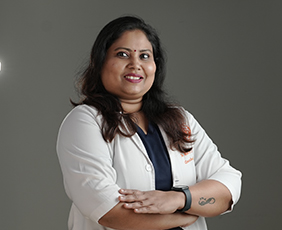


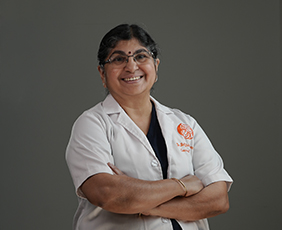

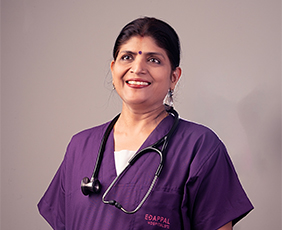
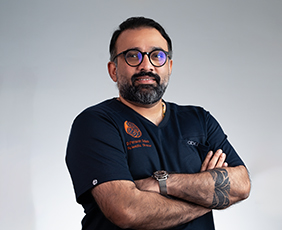
Dr. Parasuram Gopinath
(OBG)
Medical Director & Scientific Director
Cimar the Women’s Hospital
Book An Appointment
